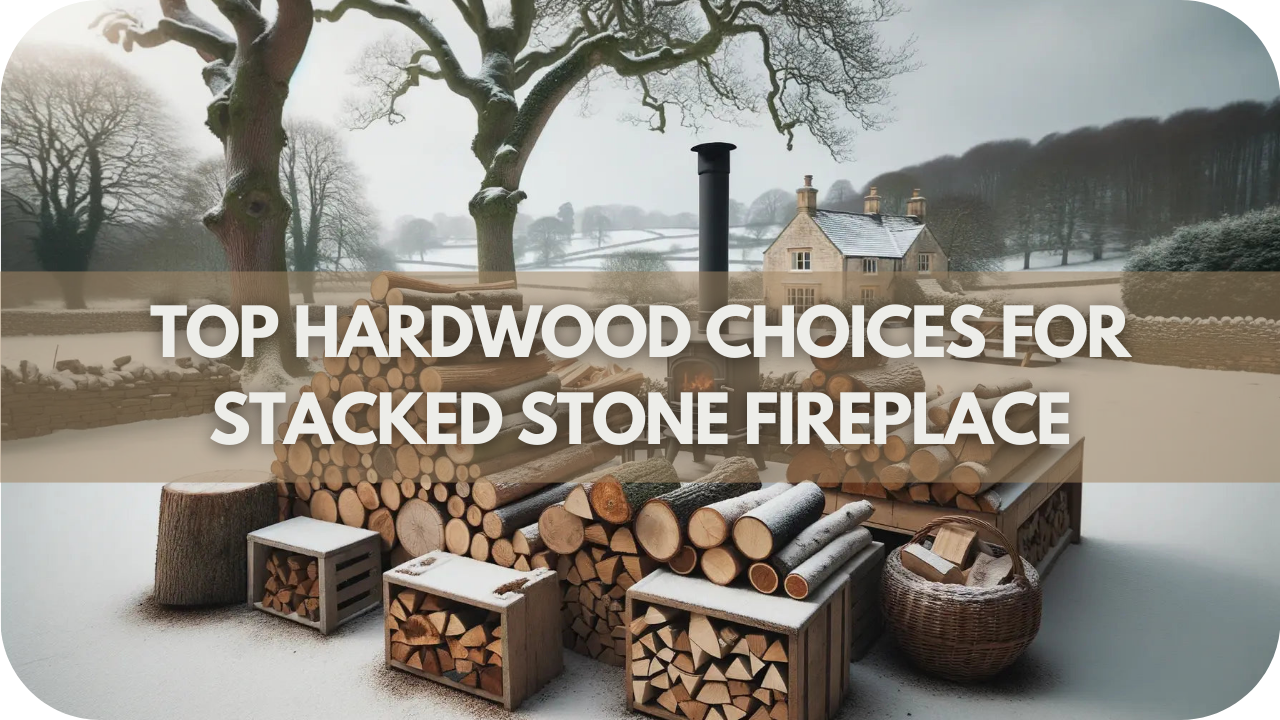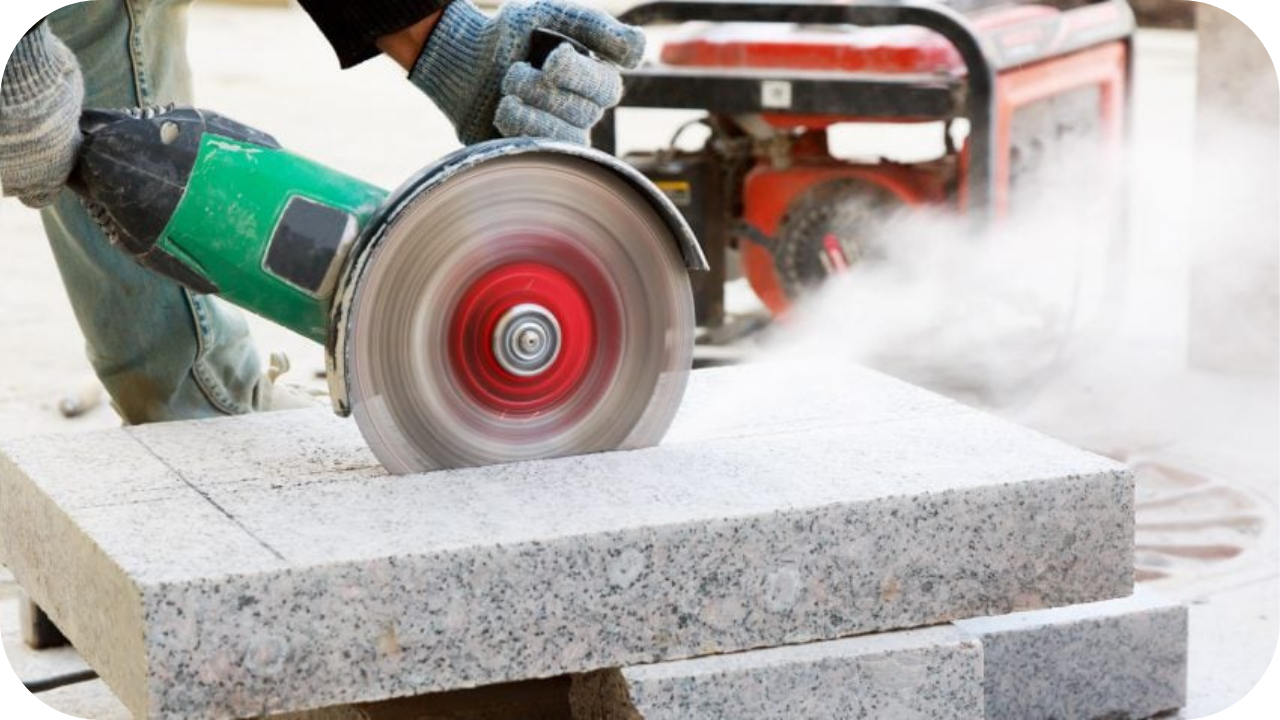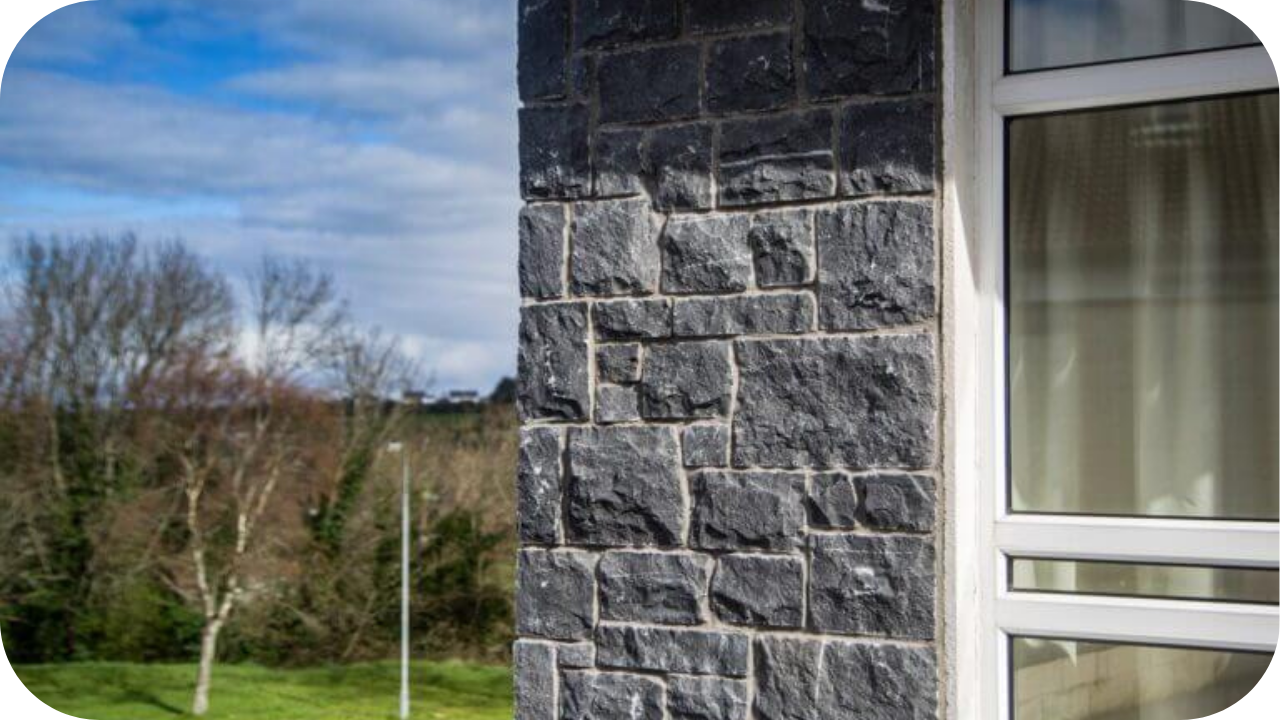
Selecting the suitable wood for your stacked stone fireplace can lead to efficient burning, excessive smoke, and frequent refuelling.
Poor choices diminish the warmth and comfort of your home and can also increase maintenance efforts and costs. The hassle of constant adjustments and cleaning might drown the crackling sound you love.
Before you decide, it’s essential to understand the differences between hardwood and softwood. You can explore the pros and cons of each in our detailed comparison of hardwood vs softwood fireplaces.
Explore the top hardwood choices that offer efficient burning, consistent heat, and minimal smoke to enhance your fireplace experience.
1. Oak
When burning wood in a stacked stone fireplace, oak is a top contender. Known for its high heat output and impressive longevity, oak is perfect for those seeking a warm, consistent fire throughout the evening.
Oak’s dense structure allows it to burn slowly and steadily, providing a reliable and intense heat source. This density also translates to a longer burn time, reducing the need for frequent refuelling and making your fireplace experience more convenient.
In addition to its heat efficiency, oak produces minimal smoke, which is beneficial for maintaining a clean chimney and reducing creosote build-up. It not only lowers maintenance but also enhances the safety of your fireplace. Oak’s clean burn and steady flame make it an ideal choice for homeowners who want warmth and efficiency.
2. Ash
Ash is another excellent hardwood choice for burning in a stacked stone fireplace. It offers a perfect balance between heat output and ease of use. Renowned for its ability to ignite quickly and burn consistently, ash provides a reliable source of warmth with minimal effort.
Its moderate density allows it to burn steadily, producing much heat without needing constant attention.
One of the standout features of ash is its low moisture content, which means it burns cleanly with minimal smoke. Ash helps keep your chimney clear of creosote build-up, reducing maintenance and enhancing the safety of your fireplace. It also splits easily, making it a user-friendly option for those who prefer to prepare firewood.
3. Beech
Beech is a hardwood that delivers consistent heat and a clean burn, making it a strong candidate for use in a stacked stone fireplace.
Beech’s fine grain and high density contribute to its ability to burn slowly and evenly, ensuring a long-lasting fire that provides steady warmth throughout the room. This makes beech an excellent option for those who want a dependable heat source without frequent refuelling.
One of the key advantages of beech is its clean-burning nature. When correctly seasoned, beech produces minimal smoke and ash, which helps maintain a cleaner chimney and reducing creosote build-up risk. It not only cuts down on maintenance but also enhances the safety and efficiency of your fireplace.
Beech is also relatively easy to split and prepare, making it a convenient choice for those who prefer to handle their firewood. If you’re looking for a hardwood that offers a reliable and efficient burn with minimal fuss, beech is an excellent choice for your fireplace.
4. Birch
Birch is popular for those who appreciate a quick-starting fire with vibrant flames. Birchwood is known for its ability to ignite easily, making it ideal for those who want to get their fire going swiftly without the need for kindling or additional fire starters. This quality makes birch particularly useful in cold climates where a quick source of warmth is essential.
In addition to its fast ignition, birch burns brightly, creating a lively and visually appealing fire. Although birch has a shorter burn time compared to denser hardwoods, it compensates with its ability to produce intense heat quickly. It makes it perfect for situations where you need immediate warmth, and you don’t mind adding more wood to the fire as needed.
However, birch produces more creosote than wood like oak or ash, so regular chimney maintenance is essential to ensure safety. For those seeking a hardwood that delivers quick heat and a beautiful flame, birch is a fantastic choice for your fireplace.
5. Maple
Maple is a hardwood that offers a winning combination of long-lasting heat and a clean burn, making it an excellent choice for your stacked stone fireplace.
Maple’s dense structure allows it to burn slowly, providing steady and prolonged warmth that can keep your home comfortable for hours. This makes it particularly well-suited for those who prefer a fire that doesn’t require constant attention.
One of the maple’s standout characteristics is its clean-burning nature. When properly seasoned, maple produces minimal smoke and ash, which helps maintain a clean chimney and reduces the risk of creosote build-up. This not only decreases maintenance but also enhances the safety and efficiency of your fireplace.
Maple wood also delivers a steady, even heat output, ensuring your space remains warm and inviting. While it may be slightly harder to ignite than lighter woods like birch, the effort is well worth it for the consistent and long-lasting fire it provides.
If you’re looking for a reliable and efficient wood that offers warmth and minimal maintenance, maple is an excellent choice for your fireplace.
Factors in Choosing Hardwood for Efficient Burning Stacked Stone Fireplace
The right hardwood for your stacked stone fireplace is crucial for optimal performance and efficiency. The primary factors include:
- Heat Output: Hardwoods like oak and ash are known for their high heat output, which is essential for maintaining a warm and comfortable environment. These woods burn hotter and longer, reducing the need for constant refuelling.
- Burn Time: A longer burn time means less frequent tending to the fire, allowing you to enjoy a relaxing atmosphere without interruption. Hardwoods generally burn longer than softwoods due to their dense structure, making them ideal for sustained heating.
- Smoke Production: Minimising smoke production is essential for maintaining air quality and reducing creosote build-up in your chimney. Hardwoods produce less smoke than softwoods, ensuring a cleaner and more efficient burn.
- Moisture Content: Properly seasoned wood with low moisture content burns more efficiently and produces less smoke—season hardwood for at least six months to a year to achieve the best results.
- Ease of Splitting: Certain hardwoods, such as ash, are more effortless to split, making them more convenient for preparing firewood. This ease of splitting saves time and effort in maintaining your firewood supply.
- Aroma and Ambience: Different hardwoods produce distinct aromas when burned. For example, cherry wood offers a pleasant scent that can enhance the ambience of your living space. Choosing a hardwood with a desirable aroma can add to the overall enjoyment of your fireplace.
- Sustainability and Environmental Impact: Consider the environmental impact of your wood choice. Opting for sustainably sourced hardwoods helps reduce deforestation and supports ecological balance. Look for certified wood that ensures responsible harvesting practices.
Minimising smoke production is essential for maintaining air quality and reducing creosote build-up in your chimney. For a detailed guide on low-smoke firewood options, refer to Which Firewood Produces the Least Smoke for Stacked Stone Fireplaces.
Tips for Storing and Seasoning Hardwood for Stacked Stone Fireplace
Proper storage and seasoning of hardwood are crucial for ensuring optimal performance and efficiency in your stacked stone fireplace. Here’s how to get it right:
- Seasoning Time: Season hardwood for at least six months to a year before use. Proper seasoning reduces moisture content, essential for efficient burning and minimal smoke production.
- Storage Location: Store firewood in a well-ventilated, dry area. To prevent moisture absorption, avoid placing it directly on the ground. Use pallets or raised platforms to keep wood off damp surfaces.
- Stacking Method: Stack wood in a crisscross pattern to allow air circulation around the logs. It helps even with drying and prevents mould growth. Ensure the stack is covered from rain but well-ventilated to allow moisture to escape.
- Wood Covering: Use a breathable cover, like a tarp or shed, to protect the wood from rain and snow while allowing airflow. Avoid plastic coverings that trap moisture.
- Splitting Logs: Split larger logs to increase the surface area exposed to air, accelerating the drying process. More minor pieces season faster and are easier to handle.
Safety Considerations for Using Hardwood in Stacked Stone Fireplaces
Ensuring safety when using a stacked stone fireplace is paramount for your home and family. Here are essential safety considerations to keep in mind:
- Regular Chimney Maintenance: Schedule annual chimney inspections and cleanings to prevent creosote build-up, which can lead to chimney fires. A professional sweep will ensure your chimney is clear of blockages and functioning efficiently.
- Proper Ventilation: Ensure your fireplace and chimney have adequate ventilation to allow smoke and gases to escape. It helps prevent carbon monoxide build-up, which can be dangerous if undetected. Install a carbon monoxide detector in your home for added safety.
- Use of Fireplace Screens: Always use a fireplace screen to contain sparks and embers within the fireplace. It prevents accidental fires and protects against burns or injuries.
- Safe Wood Storage: Keep flammable materials and furniture away from the hearth area.
- Extinguishing Fires: Never leave a fire unattended. Use a fire extinguisher or sand to safely extinguish the fire before leaving the room or going to bed.
Conclusion
Selecting the correct hardwood is crucial for maximising the efficiency and enjoyment of your stacked stone fireplace. Choose wisely for better heat output, minimal smoke, and an inviting atmosphere.
Explore these top hardwood options today and transform your fireplace experience. Start by sourcing quality wood from trusted local suppliers.
More To Explore

Safety Considerations When Cutting or Drilling Beachport Quartz
Working with Beachport Quartz isn’t just about precision cuts. It also involves serious health and safety concerns that cannot be ignored. This quartz-rich stone contains

Is Jasper Limestone a Good Insulator?
Insulation isn’t just about keeping the cold out; it’s about building smarter, more comfortable spaces that perform all year round. With rising energy demands and


